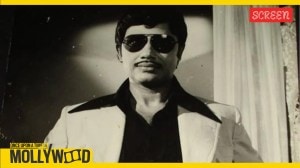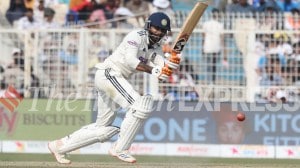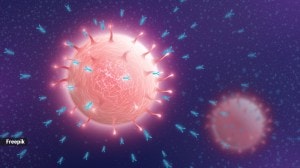Explained: The rise of Chinese carmaker BYD
Chinese auto giant BYD has emerged as the largest EV maker, and the sixth largest automaker overall, by vehicle sales. Three decades ago, it began as a battery manufacturer
 BYD is the largest seller of EVs in the world. (Wikimedia Commons)
BYD is the largest seller of EVs in the world. (Wikimedia Commons)Not in his wildest dreams would Wang Chuanfu have imagined that his battery company would one day become one of the largest carmakers in the world. Or maybe he did. After all, to make it in the auto business that has long been dominated by legacy players needs someone who can dream big.
Now, Wang’s BYD — literally “Build Your Dream” — has become one of the largest auto companies in the world. The Shenzhen-based carmaker on Monday (March 24) reported revenue of $107 billion for 2024, beating Tesla’s revenue of $97.7 billion for the year. And by selling 4.3 million electric and hybrid cars, it edged out Honda to become the sixth-largest automaker in the world by vehicle sales, according to research firm Inovev. Only Toyota, Volkswagen, Hyundai-Kia, General Motors and Stellantis (the parent-company of brands like Jeep, Chrysler, and Fiat) were ahead.
How did BYD, once laughed at by Elon Musk, become the largest maker of electric cars in the world? Here’s the story.
From battery maker to auto giant
BYD was established in 1995 by chemist Wang Chuanfu who saw an opportunity to start a rechargeable battery company to challenge Japan’s dominance in the industry. Wang founded the firm after taking a $350,000 loan from his cousin, and the company initially built batteries for mobile phones and power tools.
Its first success came in 2000 when it started to supply batteries to Motorola, one of the biggest mobile phone companies of the time. This largely happened due to the persistence of Stella Li, BYD’s executive vice president.
“In her mid-20s and with a rough grasp of English, Li showed up with a box of battery samples and spent months courting the procurement team at Motorola’s battery R&D campus in the Atlanta suburbs… Motorola executives thought she was a pest… but the cost savings she was promising were so great… that they eventually agreed to test BYD’s battery cells,” according to a report by Bloomberg.
It was not until 2003 that BYD decided to manufacture cars as well. That year, it bought a majority stake in a failing state-run car company, Xi’an Qinchuan Auto Co. Although investors of BYD were not happy about the development, Wang — who did not even know how to drive at the time — saw cars as a natural extension of the company’s battery business.
BYD launched its first car, an internal combustion model called F3, in 2005. Three years later, it introduced the F3DM, a plug-in hybrid electric vehicle, marking the company’s foray into electric vehicles (EVs).
The company got a boost after Warren Buffett’s Berkshire Hathaway made a $230 million investment in BYD in 2008.
Today, the company manufactures both full EVs and plug-in hybrids, and does what no other car manufacturer has managed to do yet: sell (relatively) affordable electric cars at a profit. It exports its cars to around 95 countries, including India.
Reasons for success
There are a few different factors behind BYD’s incredible success.
- 01
GOVERNMENT SUPPORT
The rise of BYD is inextricably linked to the support provided by the Chinese government. Over the past 15-16 years, Beijing has given multiple subsidies to incentivise buyers of electric cars, and offered state support to the industry. These measures began around 2009, at the time BYD was trying to ramp up its EV push.
Rhodium Group, an independent research provider, estimated that the company received $4.3 billion in state support between 2015 and 2020. Gregor Sebastian, senior analyst at Rhodium, told CNBC, “Over time, the company has enjoyed below-market equity and debt financing allowing it to scale up production and R&D activities.”
However, this is only part of the picture. BYD has succeeded primarily because of its innovation, and ability to aggressively expand outside China.
- 02
BLADE BATTERY
Wang’s dream of making BYD a dominant player in the EV sector was realised by the Blade battery, which was launched by the company in 2020. It is essentially a lithium iron phosphate (LFP) battery. At the time, most of the carmakers were moving away from such batteries due to their low energy density. In other words, they were too heavy for the amount of energy they provided.
But BYD was able to make some innovative technical improvements that helped LFP provide more energy density, and higher levels of safety. “These improvements proved LFP could be harnessed for longer-range EVs, drastically reducing overall cost. It was so competitive that Toyota uses it in its cars in China, as do many Chinese carmakers,” the Bloomberg report said.
As a result, the sales of BYD cars skyrocketed. In 2020, the company sold 130,970 pure battery electric vehicles. By last year, this number had risen to 1.76 million.
- 03
POWERING THROUGH THE PANDEMIC
When the Covid pandemic broke out in China, and the rest of the world, Wang repurposed his production lines previously used for assembling smartphones to make N95 masks. Within weeks, BYD became the biggest mask manufacturer in the world. It got contracts for making masks from Japan’s SoftBank Group Corp, the state of California, and others, helping the company add more than $1 billion to its bank account.
Moreover, unlike other automakers, BYD did not shut down its factories as it had more than enough masks for its Chinese workers who lived in tightly controlled on-campus dormitories. The company also got a steady supply of chips made by its semiconductor unit, an issue which had crippled the supply of other carmakers. This allowed BYD to push its sales numbers in the years after the pandemic subsided.
- 04
AGGRESSIVE GLOBAL EXPANSION
Over the years, BYD has been able to give stiff competition to other EV makers such as Tesla even outside China. For instance, in southeast Asia, BYD has a 43% market share in EVs, according to the 2024 report by CNBC.
The company captures a new market by following a simple playbook: do intensive market research; allure people on the ground; and then use the company’s vast product portfolio to sell whatever people want.
“One city might want a rail transit system, another an electrified municipal bus fleet. In London, she [Stella Li] started out with electric city buses to introduce the brand, then moved on to passenger cars. She did the same in Jakarta,” the Bloomberg report said.
What’s next
With its increasing dominance in the global market, BYD has already started to face some new hurdles.
The United States and European Union have put protectionist tariffs on the company’s cars being exported from China, fearing BYD and other Chinese will severely impact local automakers. While the US has imposed a 100% tariff on Chinese EV imports, the EU has put a 17% tariff. It remains to be seen how BYD tackles these tariffs to expand its market in these regions.
Another issue has been the company’s unimpressive sales in India, an EV market which is forecasted to expand from $3.21 billion in 2022 to $113.99 billion by 2029, according to Fortune Business Insights. Last year, BYD had a 3% market share and a 40% increase in sales, reaching 2,818 units, according to a recent report by The Financial Express.
One reason for BYD’s underperformance has been the absence of its manufacturing plant in India. As a result, its cars come with a hefty 110% import duty. The government is currently mulling over reducing this duty, but there has been no official announcement about the matter.





- 01
- 02
- 03
- 04
- 05

































